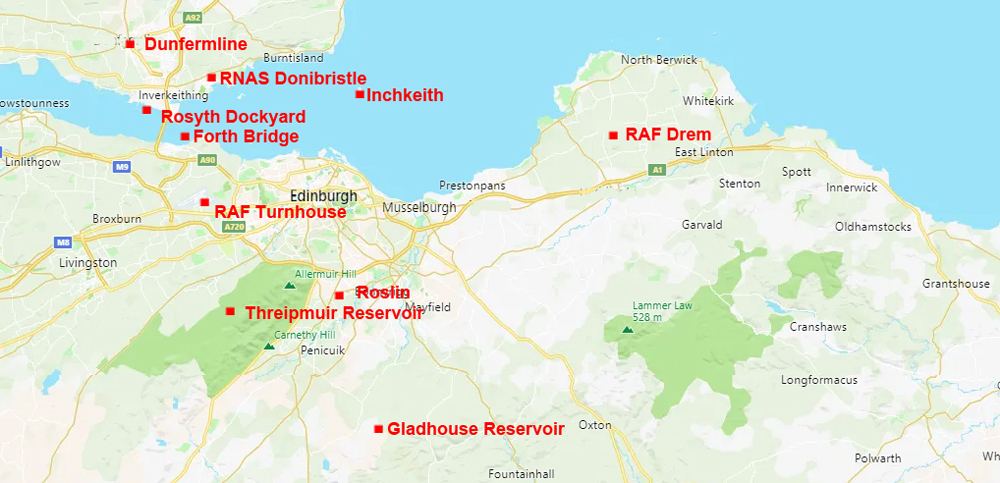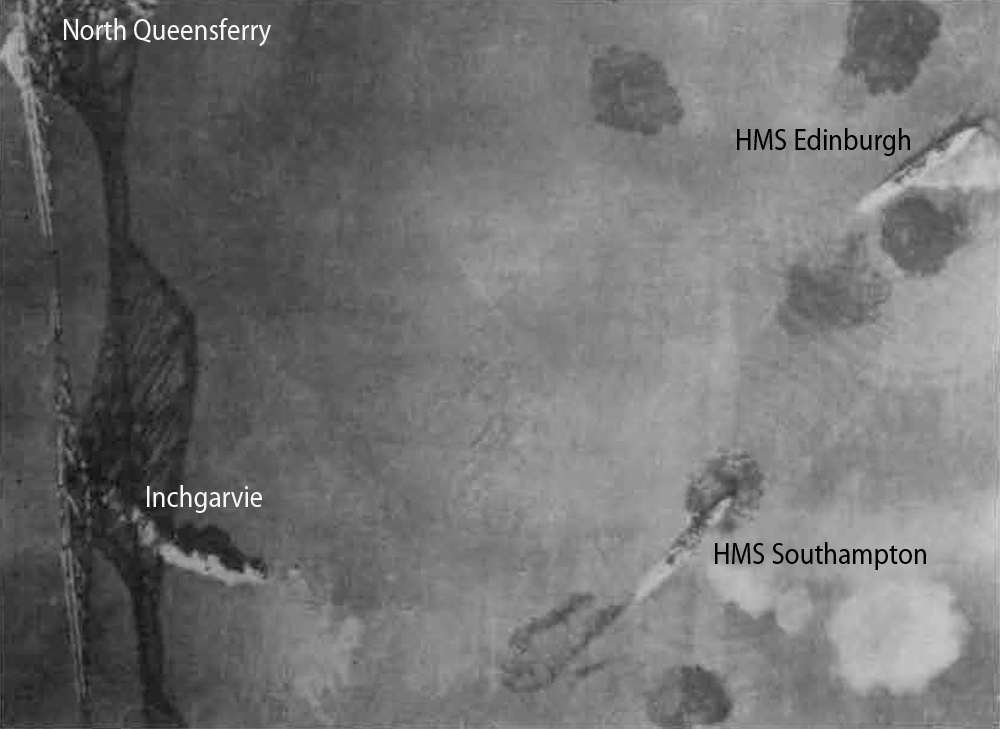First Air Raid of WWII – 20
14.38 – The second wave attacks from the west
| < 19 AA gunners respond | Δ Index | 21 2nd wave eye witnesses > |

After passing to the north of Gladhouse Reservoir, Storp headed north-west passing to the south of the village of Roslin and over the Threipmuir Reservoir before continuing on the same heading towards the Forth, now only five minutes away. As he did so he dropped the nose of his Ju88 in order to bring the aircraft down to its attacking altitude of 12,000 feet.
The Luftwaffe crews were aware that Turnhouse aerodrome, with its RAF fighters, lay below them to the east but unaware at that moment in time that the fighters of 603 Squadron were climbing to intercept. As recorded in the 603 Squadron ORB, Yellow Section took off from Turnhouse and, as the Spitfires climbed, Storp’s section flew overhead and across their path en route to Rosyth.
Unlike Pohle, Storp intended making a wide right-hand sweep to take his section over the dockyard. This plan of attack would allow them to make a more rapid exit from the area, out towards the North Sea. Storp estimated initiating his attack at 14.38:
Suddenly we sighted the coast. We turned inland to approach the bridge from the west. Now it becomes a question of attack, each machine by itself. I have the sun at my back. Nothing is to be seen of any anti-aircraft defences. But where is the Hood? To our disgust she was in dry dock, and by Fuhrer’s orders, there must be no bombs dropped on land. So the Hood is safe from us.
But in front of the big bridge in the Firth of Forth, I espied a few boats. I tell the others over the radio: ‘We attack!’ Then I put the plane’s nose down, and take a ship into my sights. So down to 2,500 feet goes the dive, and l slowly recognise that I have a cruiser in my sights. Later I heard that it was the Southampton. And still no anti-aircraft defence. At 2,400 feet I let my two bombs loose. Slowly I bring the machine out of the dive, but I still go down to about 800 feet. We see that our bombs have hit the cruiser.
Both Pohle and Storp later claimed their bombs had hit the Southampton. Storp was confident his bombs had been aimed at the Southampton.
It is known that one of the 500kg bombs penetrated three decks of the battlecruiser, passing through the port hangar and the boy seaman’s mess-deck before exiting near her bow near the waterline. At that point the bomb, with its 220kg of amatol, TNT or trialen, exploded, sinking the Admiral’s barge and a pinnace which were moored alongside and peppering the ship with lethal shards of shrapnel.
The trajectory of the bomb had actually been fortuitous.
There were three casualties on board Southampton and seven on the cruiser Edinburgh. Although there were no deaths, one naval rating was seriously wounded.
 A photograph taken by one of the attacking Ju88s, showing the Forth Bridge and evidence of the bombing attacks (smoke and ripples on the water) on HMS Southampton and Edinburgh.
A photograph taken by one of the attacking Ju88s, showing the Forth Bridge and evidence of the bombing attacks (smoke and ripples on the water) on HMS Southampton and Edinburgh.
| < 19 AA gunners respond | Δ Index | 21 2nd wave eye witnesses > |
top of page
